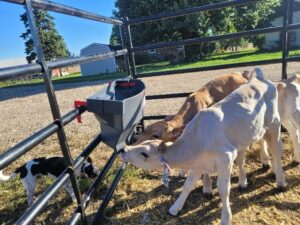From Pasture to Protection: Livestock Farmers Leading Minnesota’s Soil and Water Revival
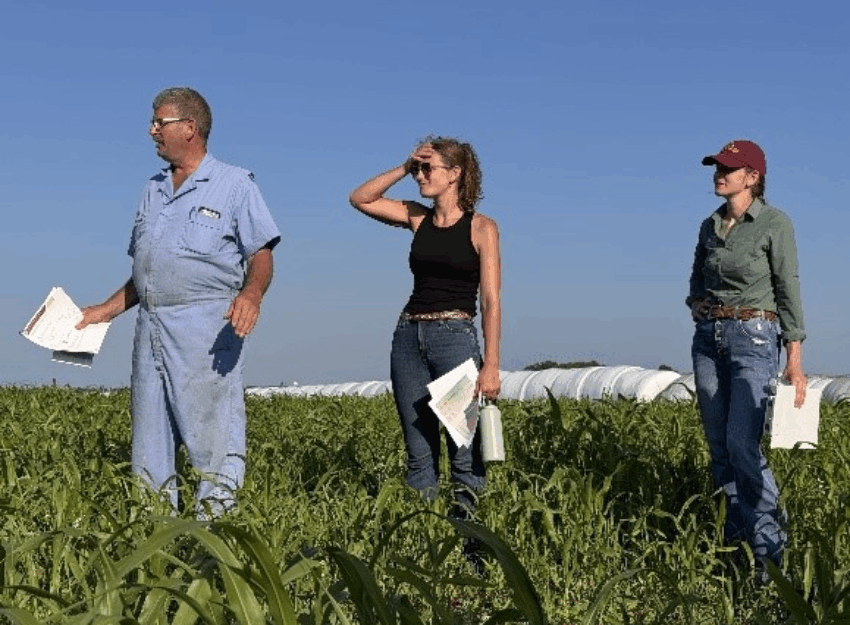
By Adriene Matthews, Agriculture and Outreach Specialist Individual Placement Member / AmeriCorps member placed at Cottonwood SWCD.
Many of us are worried about our drinking and recreating water, and we are looking for somewhere to point the finger. So many articles discuss the agriculture industry and the chemicals they are putting in our water. While these are problems that need to be addressed, this article will highlight a family of farmers who are working to protect soil health and keep our waters safe.
Hi, my name is Adriene Matthews, and I am an Agriculture Outreach Specialist for Conservation Corps Minnesota & Iowa in the town of Windom, in southwest Minnesota. I have had the wonderful opportunity to work alongside different farmers throughout the southwest area. I grew up being taught that it is important to support our farmers, and I want this article to do just that.
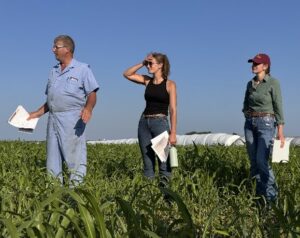
The Portner family farm has changed a lot over the years, but if you look closely there are still many things that are the same. Mark and Tom Portner began farming in the 90’s. The farm site that I got to visit was bought by their dad and became a dairy farm in 1945. Growing up their farm would raise chickens and hogs but primarily focused on Brown Swiss dairy cows. In 2024 they sold their dairy cow herd, which was around 270, and are down to a single digit herd. This is unsurprising as there has been a sharp decline in dairy farmers in Minnesota since 1940. Now the Portners have around 40 beef/dairy cow mixes that they let graze their pastureland.
Isabella, and her sister Sabrina, Tom’s daughters, began raising sheep. After doing some research, they found that sheep were a good entry level livestock, due to their low-cost and ability to quickly reproduce. After attending the Soil Health Academy in 2022, the Portner family learned about how cattle and grazing coincide with the 5 soil health principles. They were also able to learn more about rotational grazing with sheep and cattle.
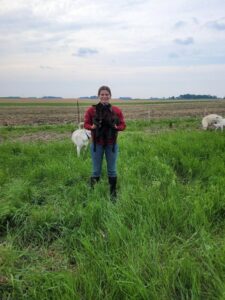
Soil Health Academy’s mission statement is ‘Teach and assist farmers and ranchers in applying time-tested, ecological principles and biomimicry to regenerate our living and life-giving soil. In restoring the health of our soil’s ecosystem, we will restore the health of our bodies, our farms, our communities, and our planet.’ When implementing the new practices that are taught at the Soil Health Academy the 5 principles of soil health are also being done. Keeping the soil covered, minimizing soil disturbance (No-tilling crops), increasing crop diversity (different crops in their rotation), keeping a living root in the soil (use of cover crops, and reduced tillage), and integrating livestock (Cow and sheep grazing).
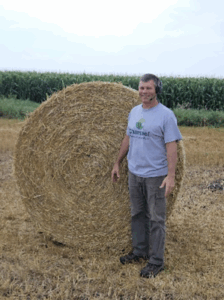
Mark does help his brother and nieces with their livestock, but he also farms row crops; Corn/Soybeans/ Small grain/ Rye. He had read about the Mn Agricultural Water Quality Certification Program and spoke with his area certifier, Herman Bartsch (you can read his article here), to decide the pros and the cons of getting certified. The initial assessment with Herman, Mark’s farm wouldn’t be certified, Mark chose to continue with the certification by implementing new soil health practices so that he would qualify for certification. After working with Herman, Mark was MAWQCP certified in 2025. He also appreciates that being certified will provide him with a 10-year certainty for any new laws or rules that are implemented for water quality.
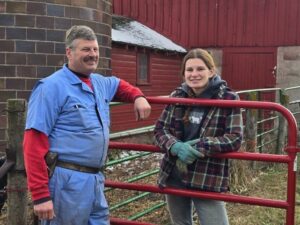
The Portners also stated that they don’t see that the farming practices that they are doing are considered conservation. They consider it better soil health practices, to help benefit the land overall. The Portners pay close attention to the plant seed that will grow to feed their livestock. They noticed that some plants that were genetically modified wouldn’t break down as easily, after harvest. This was not something that they wanted their cattle to eat because, if it’s not breaking down naturally in the field, the cattle may have a hard time digesting it. Mark stated, ‘It all goes back to soil health. You can raise all the food that you want, but if it’s not nutrient dense what good is it for you?’ Donald Davis and his research team at the University of Texas, Austin, found that there was a decline in nutritional value in crops being sold in 2004 as compared to the 1940’s. He credited this to nutrient depletion in the soil, due to increased crop yield number, bigger crops and a rapid growth pace.
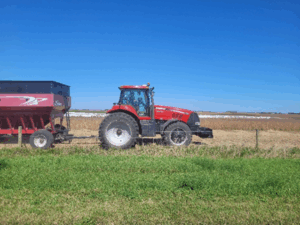
The Portner family like to emphasize improving soil health to be beneficial to their livestock and crops. By planting a variety of crops in their field, it improves soil health and provides different forage for their livestock. Soil health is improved because different plants can react differently in the soil. Some plants, such as legumes, can create nodules in their roots that react to rhizobia bacteria in the soil and are supplied with nitrogen. Many other farmers and landowners are starting, or have already been implementing, soil health practices that are beneficial for Minnesota waters and human health. While the Portners have changed some of their operation practices, they are still dedicated to having healthy livestock, improved soil health, and nutritious crops.
